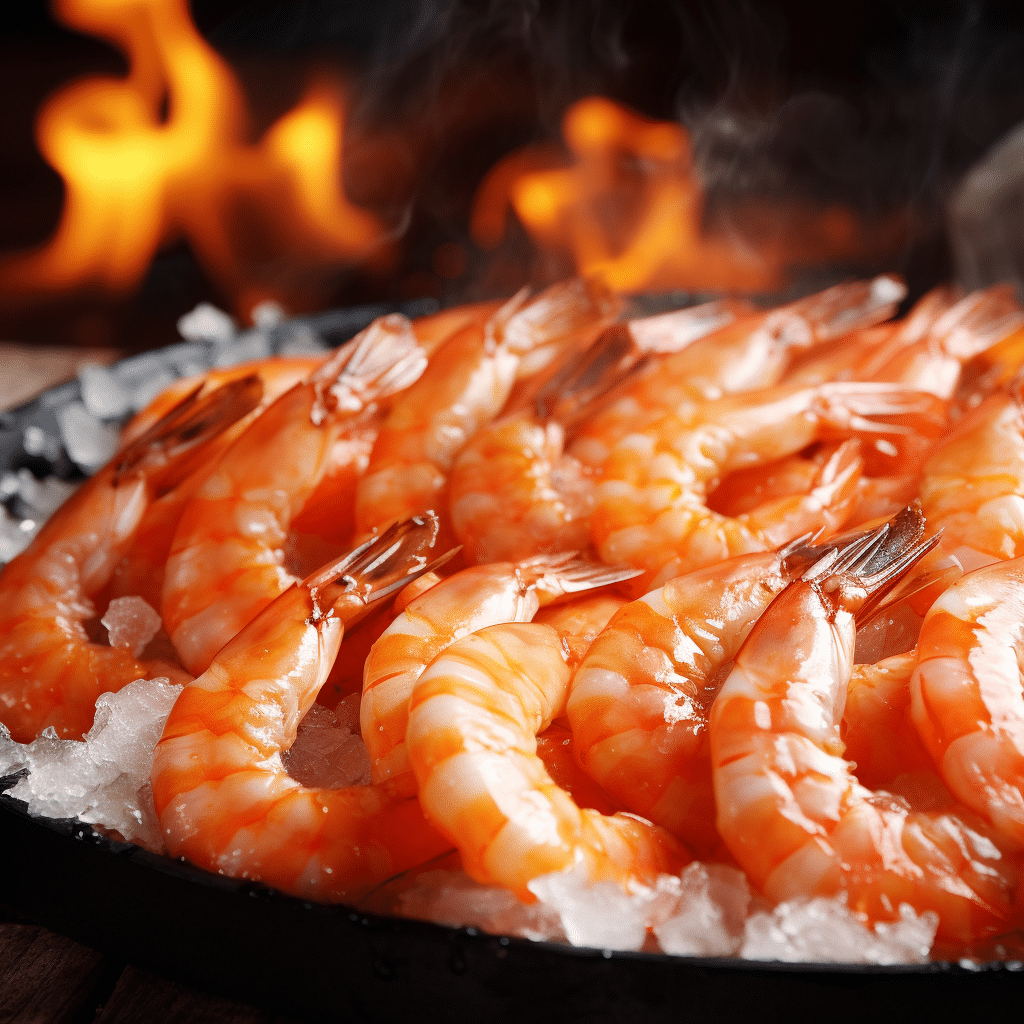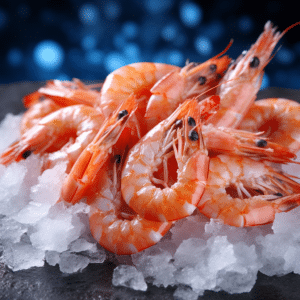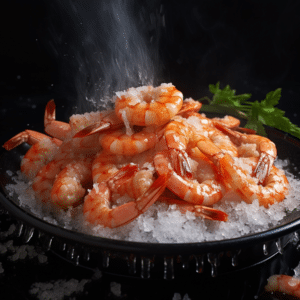
Cooking Frozen Shrimp: Thawing Storing and More
cooking frozen shrimp: If you have a bunch of frozen shrimps in your freezer and open them, you will probably notice that they are still fresh. But what happens if they expire? Is it safe to eat? Can you cook frozen shrimp without thawing them first?
What if all of your frozen shrimp are expired? Are you doomed to feel embarrassed at the seafood buffet this weekend, or is there a way around this inevitable embarrassment? Keep reading to learn more.

Is It Possible To Cook Frozen Shrimp Without Thawing?
Yes, it is possible to cook frozen shrimp without thawing. All you need is to steam them. You can also use a pressure cooker for cooking frozen shrimp.
Yet, if you are using a pressure cooker, it will be more convenient than a steamer. It will cook the shrimp faster because of its high temperature while making it more tender and juicier.
Thawing Frozen Raw Shrimp
Thawing frozen raw shrimp is simple and fast. All you have to do is put the shrimp in a water bowl and immerse them in it. You should completely thaw the shrimp within 10 minutes or less. You can speed up the process even more by placing them in a refrigerator overnight.
The only thing you need to worry about is that frozen shrimp may not be as tasty as cooked shrimp, especially if it has been sitting around for a while. However, once it’s thawed, it will taste just like fresh raw shrimp and have all its natural flavors intact.
Ultimately, if you do decide to cook your frozen shrimp, make sure that you follow the instructions on the side of the package carefully so that your dish comes out just right. Below are some of the common methods of thawing frozen raw shrimp.
Thawing In the Refrigerator
The best way to thaw frozen raw shrimp is by using a refrigerator. You should maintain the temperature of your refrigerator between 35- and 40 degrees Fahrenheit when thawing frozen raw shrimp.
This temperature is ideal for defrosting frozen raw shrimp and will not affect the flavor or texture of the shrimp. Additionally, frozen raw shrimp will take around 24-48 hours to become completely thawed out.
However, to speed up the process, place your raw shrimp on a plate and put them in a refrigerator with a plastic bag filled with water. This will help prevent bacteria from developing on your plate or inside your plastic bag while stored in the fridge.
Using Cold Water
Additionally, for the best results, use cold water. After you have thawed your shrimp in a colander, put the colander into a large bowl or pot of cold water. Do not let the shrimp sit in this water for more than 20 minutes. This will help keep them from cooking due to the heat in your kitchen.
The same goes for when you are cooking them to make sure they don’t overcook. The longer they sit in the cold water, the less likely they will overcook and become tough.
How To Store Shrimp
Shrimp is a seasonal product available at certain times of the year. This means that you will have to plan your shopping accordingly.
If you want to buy cooking frozen shrimp, you need to know how to store it properly. Shrimp should be stored in an airtight container, away from heat and direct sunlight. Here are some tips on how you should store shrimp:
Keep it cool
Shrimp can easily go bad if kept at room temperature or above. So you should keep your shrimp in the fridge until you are ready to use or freeze them for later use.
Package it right
If you want your shrimp to last longer, make sure they are packed well before storage. You should also choose dry ice over liquid nitrogen as it lasts longer than liquid nitrogen and does not leave any residue when used on foods such as fish or seafood like shrimp.
Signs of a Gone Wrong Raw Shrimp
Raw shrimp is one of the most popular seafood choices, and it’s also one of the most delicious. But if you’ve ever bought raw shrimp and had it turn out to be bad, then you’re not alone.
The problem can be anything from a bad batch of shrimp to a bad supplier. However, if you notice any of these signs, you should be sure that you purchased spoiled raw shrimp.
The smell: Raw shrimp has a strong smell when it’s fresh — some people may even describe it as “fishy.” However, if you get a shipment of raw shrimp from someone who has been storing them for a long time or is transporting them in an unrefrigerated truck, they will also have an unpleasant aroma. This can be indicative of spoilage or just storage issues in general.
The color: Raw shrimp should have an opaque white color; any discoloration in your shipment means something went wrong with the product. If your shipment seems pale or translucent, this could also indicate problems with the product itself.
Can You Eat an Expired Shrimp
Expired seafood is still safe to eat, but it’s not as fresh as new. The USDA recommends that seafood be eaten within three days of purchase or frozen within two weeks.
Ultimately, fresh or expired, the main concern with shrimp is bacterial contamination. When you open the bag of shrimp sitting around for a while, bacteria can quickly begin to grow on them. This can make you sick if you eat them, so ensure the shrimp are still good before eating them.

While You can still eat expired or old shrimp, there are some things to consider when preparing them for consumption:
- The color and texture of your shrimp will change over time. Fresh shrimp has a bright red color and firm texture with no apparent signs of decay. Due to bacterial growth on the outside shell, expired or old shrimp will turn blackish-brown in color and become soft and rubbery in texture.
- You may notice a strange odor from your seafood if it has been sitting around for a while — especially in warm weather when it’s exposed to air inside an open container.
Bottom Line
cooking frozen shrimp: If you are wondering what to do with shrimp that has gone bad, the truth is that most sources will support the same answer — throw it away! This applies to raw and cooked shrimp, though the latter can be safer because it is cooked.
Ultimately, you have to consider certain factors before deciding whether you can still eat expired shrimp.